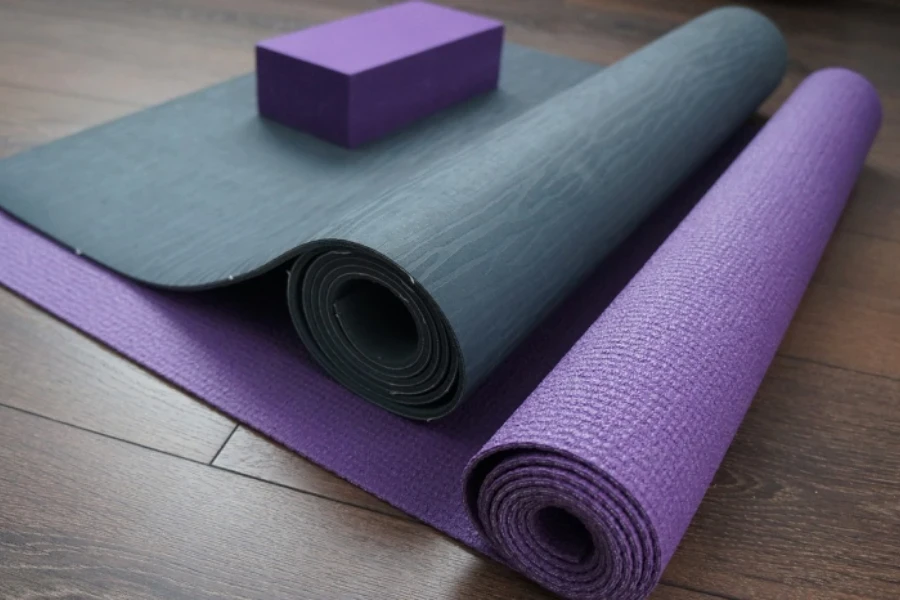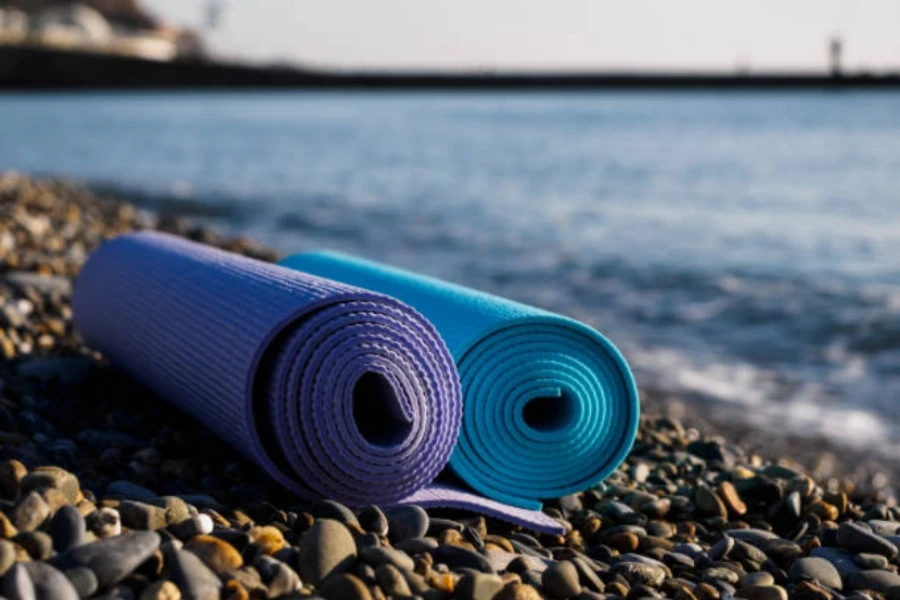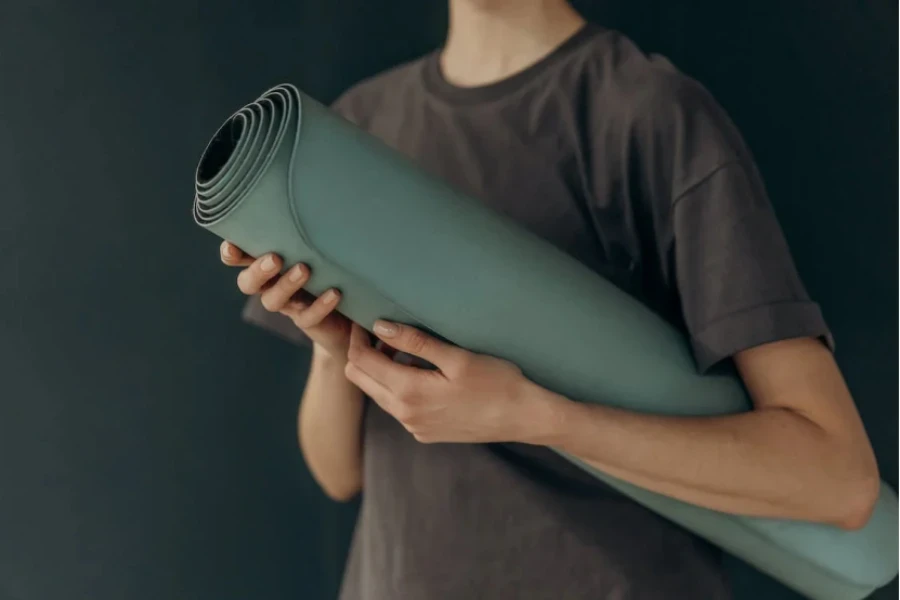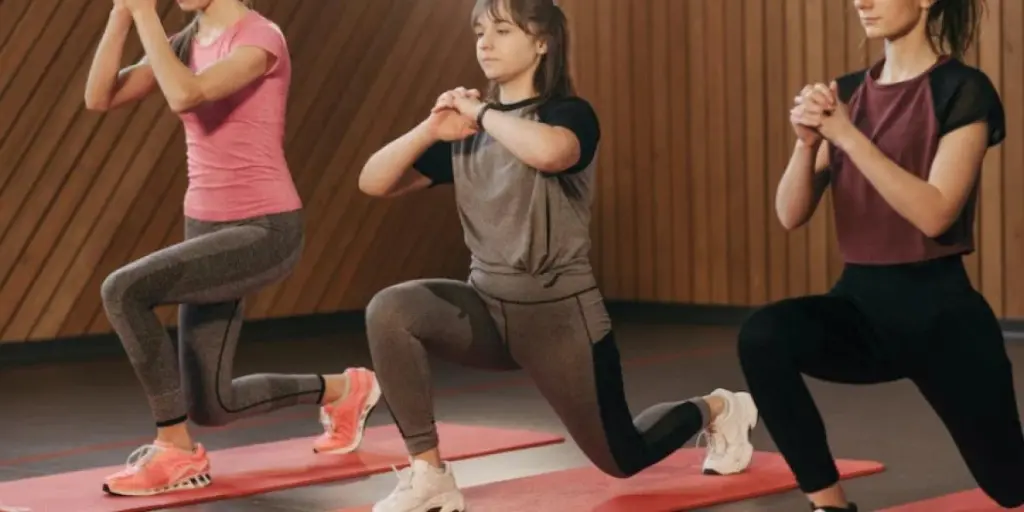In the dynamic world of 2024, the selection of a yoga mat transcends mere functionality; it embodies a commitment to wellness, sustainability, and the nuanced needs of a diverse clientele. As the practice of yoga continues to flourish globally, the demand for mats that cater to varying preferences in material, texture, and design has surged. This evolution has transformed yoga mats into a pivotal element of the wellness industry, necessitating astute selection to ensure alignment with consumer values and market trends. This article delves into the intricacies of choosing yoga mats that resonate with contemporary trends, focusing on eco-conscious materials, innovative designs, and the subtle interplay of functionality and aesthetics.
Table of Contents:
1. Unveiling the essence of yoga mats in 2024
2. Crafting the perfect practice: selecting your yoga mat
3. The elite circle: top yoga mats of 2024
4. Conclusion
1. Unveiling the essence of yoga mats in 2024

Exploring the yoga mat marketplace
As the calendar turns to 2024, the yoga mat market reflects a clear shift towards eco-consciousness and innovation. The surge in eco-friendly and sustainable yoga mats is not just a trend but a reflection of a deeper societal commitment to environmental stewardship. These mats, often crafted from natural or recycled materials, offer a tangible solution to the growing concerns over waste and sustainability. The rise in demand for biodegradable materials further underscores this shift, as consumers increasingly seek products that align with their values of reducing environmental impact.
The popularity of yoga mats with alignment cues marks another significant trend, particularly beneficial for beginners. These mats, often featuring visually distinct markers, aid practitioners in maintaining proper posture and alignment, enhancing the yoga experience and reducing the risk of injury. This innovation speaks to a broader trend of yoga mats evolving to meet the specific needs of users, blending functionality with educational elements.
Key market trends and data insights
The 2024 Yoga Mat Market Insights report presents a comprehensive analysis of the industry, highlighting significant growth and development trends. The global Yoga Mat market size, valued at USD 12698.28 million in 2022, is projected to expand at a CAGR of 4.94% during the forecast period, reaching USD 16954.38 million by 2028. This growth is indicative of the increasing popularity of yoga and the rising demand for yoga mats.

Delving into market data and statistics reveals a robust and growing interest in yoga, with a notable percentage of individuals engaging in the practice in 2024. In the United States, a survey by Yoga Alliance and Yoga Journal indicated that yoga was gaining traction, with 14 percent of adults engaging in the practice. This figure is likely to have increased by 2024, reflecting the global trend. This uptick in participation has naturally translated into increased sales of yoga mats, with top-selling models reflecting the trends of eco-friendliness and enhanced functionality. Consumer preferences have also evolved, with purchasing behavior indicating a willingness to invest in higher-quality, sustainable mats that promise durability and align with personal values.
The yoga mat market of 2024 is a testament to the industry’s responsiveness to consumer demands and global trends. It’s a market that not only caters to the practical needs of yoga practitioners but also resonates with broader societal shifts towards sustainability and mindful living.
2. Crafting the perfect practice: selecting your yoga mat

Eco-conscious materials: the green revolution
Selecting the ideal yoga mat is a nuanced process that hinges on a deep understanding of material composition, texture, and ergonomic design. In the current market, the emphasis on eco-friendly materials is not just a trend but a reflection of a broader commitment to sustainability. Natural latex, for instance, stands out for its biodegradability and resilience, offering a greener alternative to synthetic materials. Its elasticity and durability make it a preferred choice for those seeking a balance between environmental consciousness and functional longevity.
The avoidance of toxic phthalates is another critical consideration. Phthalates, commonly used to increase the flexibility of plastics, have raised health and environmental concerns. The industry’s shift towards phthalate-free yoga mats is a response to these concerns, ensuring that products are safe for both users and the environment. This conscientious approach to material selection underscores the industry’s dedication to both user well-being and ecological responsibility.
Stability and safety: the grip factor
Grip and texture are pivotal for ensuring safety and enhancing the yoga experience. A non-slip surface is paramount, as it prevents slippage and potential injuries, thereby instilling confidence in the practitioner. The emergence of dual-textured mats, offering varied surfaces on each side, caters to diverse practices and preferences, exemplifying the industry’s innovation in design. For instance, a mat with a smooth side can be ideal for gentle yoga styles, while a textured side provides the necessary grip for more dynamic practices.
Comfort in practice: thickness and texture
Thickness and comfort are equally critical in the selection process. A mat’s thickness plays a crucial role in providing joint support, especially during prolonged sessions or poses that exert pressure on the knees and elbows. Standard yoga mats typically range from 1/16 inch (1.6 mm) to 1/4 inch (6.4 mm) in thickness. Thinner mats, around 1/16 inch, are lightweight and suitable for travel, while thicker mats, around 1/4 inch, offer more cushioning and are ideal for restorative practices or individuals with joint sensitivities.

Memory foam construction has emerged as a popular choice, offering superior cushioning and comfort. Its ability to conform to the body’s contours not only enhances comfort but also aids in maintaining stability during practice. For example, a 6mm memory foam yoga mat provides a plush surface that reduces the impact on joints without compromising stability, making it a favored option for practitioners seeking both comfort and support.
The selection of a yoga mat is a multifaceted decision that intertwines functionality, comfort, and a commitment to sustainability. It requires a discerning eye for material quality, a keen sense of the desired texture and grip, and an understanding of the appropriate thickness for individual needs. As the industry continues to evolve, these considerations will remain at the forefront of guiding informed and conscientious choices in yoga mat selection.
3. The elite circle: top yoga mats of 2024
In the realm of yoga, the mat serves as a foundation, a space that supports and enhances the practice. As yoga continues to gain traction globally, the demand for high-quality yoga mats has surged, leading to the emergence of several standout models, each with its unique features and benefits.

Sweaty Betty super grip: the eco warrior
The Sweaty Betty Super Grip Yoga Mat is a testament to the brand’s commitment to quality and performance. Crafted from soft natural latex, this mat offers an unparalleled non-slip surface, ensuring stability even during the most rigorous sessions. Its durability is complemented by its eco-friendly composition, making it a favorite among environmentally conscious practitioners. The mat’s thickness provides adequate cushioning, reducing the impact on joints and ensuring a comfortable practice.
Lululemon’s The Mat 5mm: the dual-sided dynamo
Lululemon, a brand synonymous with premium yoga wear, extends its expertise to yoga mats with The Mat 5mm. This mat stands out for its dual-textured sides, allowing users to switch between a smoother or more textured surface based on their practice needs. The firm rubber construction ensures longevity, while the 5mm thickness offers the right balance between cushioning and stability. Its moisture-wicking properties make it ideal for sweaty sessions, ensuring a safe and slip-free practice.
Gaiam yoga mat: the lightweight traveler
Gaiam, a pioneer in the yoga industry, offers a lightweight mat with reversible sides. This feature allows users to switch between two different textures, catering to varied practice styles. The mat’s thickness ensures comfort, while its lightweight design makes it portable, ideal for those on the move. Gaiam’s commitment to sustainability is evident in its choice of materials, ensuring an eco-friendly product.

Yogi Bare Paws: the alignment artist
Yogi Bare’s Paws Extreme Grip Yoga Mat is designed for those who prioritize stability. Its exceptional grip ensures that practitioners can hold poses without the fear of slipping. The unique Aztec print serves a dual purpose – adding an aesthetic appeal and acting as a guide for alignment. This feature is particularly beneficial for beginners, helping them maintain the correct posture and alignment throughout their practice.
Liforme happiness travel mat: the versatile virtuoso
For the modern yogi who’s always on the move, the Liforme Happiness Travel Mat is a perfect companion. Despite its compact design, this mat doesn’t compromise on features. It comes equipped with visual alignment cues, aiding in proper positioning during practice. Its suitability for HIIT workouts makes it versatile, catering to a broader range of fitness routines. The mat’s thickness ensures comfort, while its lightweight design makes it easy to carry.
Additional insights
In addition to these standout models, several other brands and models cater to niche requirements. For instance, mats designed specifically for hot yoga come with moisture-wicking properties, ensuring a safe practice even as the temperature rises. On the other hand, travel mats are designed to be lightweight and foldable, making them easy to pack and carry.

The choice of a yoga mat goes beyond just aesthetics and brand. It’s about finding a mat that aligns with one’s practice style, values, and comfort requirements. As the yoga community continues to grow and evolve, so does the market for yoga mats, ensuring that practitioners have a plethora of options to choose from, each offering its unique blend of features and benefits.
4. Conclusion
As the yoga industry continues to flourish in 2024, the selection of a yoga mat transcends mere preference; it is a decision that reflects a commitment to sustainability, safety, and comfort. The insights gathered underscore the importance of informed choices, emphasizing the need for materials that honor the environment, designs that ensure stability, and features that enhance the overall practice. This collective wisdom serves as a guiding light for those navigating the vast array of options, encouraging a selection process that is as mindful as the practice of yoga itself.




